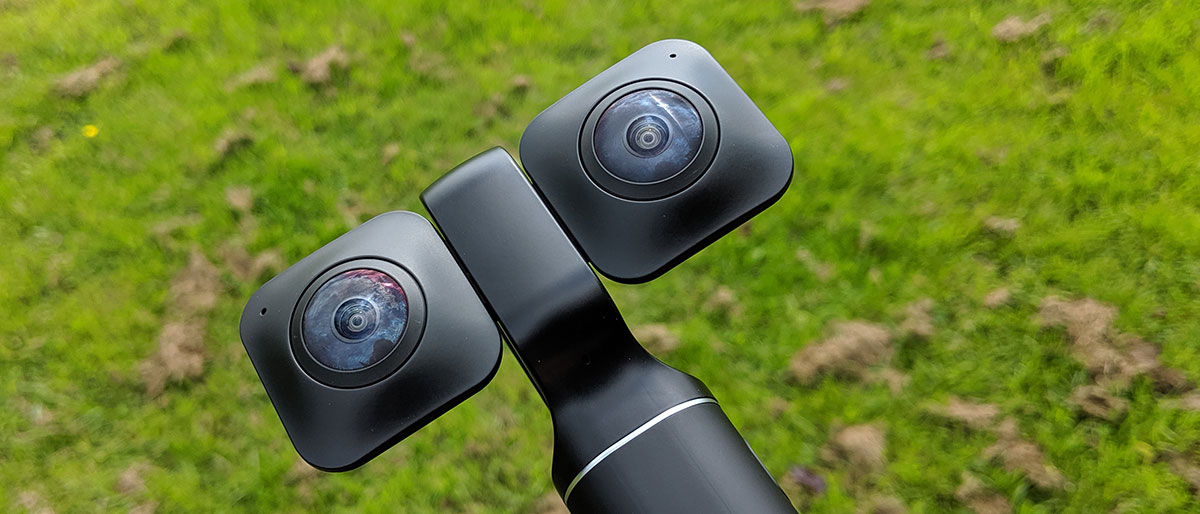Digital Camera World Verdict
It has some stiff competition from the Insta360 Evo, but the Vuze XR is an impressive bit of VR filming kit.
Pros
- +
Well designed and built
- +
Very good quality footage
- +
Switching between modes is a snap
Cons
- -
Mobile app could use some work
- -
Battery life isn't fantastic
- -
Buttons can be accidentally hit
Why you can trust Digital Camera World
The Vuze XR has been designed to make shooting 360-degree and 180-degree photos and videos as easy as possible, with a chunky and appealing design, and simple operation. The key selling point is that you can switch between 360-degree (2D) and 180-degree (3D) modes with a single button push.
That flexibility to shoot either an entire sphere or half a sphere of VR footage is something that compact devices are only just being able to do – see also the Insta360 Evo – and it means the Vuze XR is already a few points up some of the best 360 cameras. It's also capable of in-camera stitching and live broadcasting, and Vuze provides free desktop software for editing your creations, which you'll probably need.
While you can go out and shoot footage with the Vuze XR on its own, the accompanying smartphone app can act as a helpful viewfinder and a way into the camera's settings. It's available to buy now from retailers or direct from Vuze for £399 / $439.
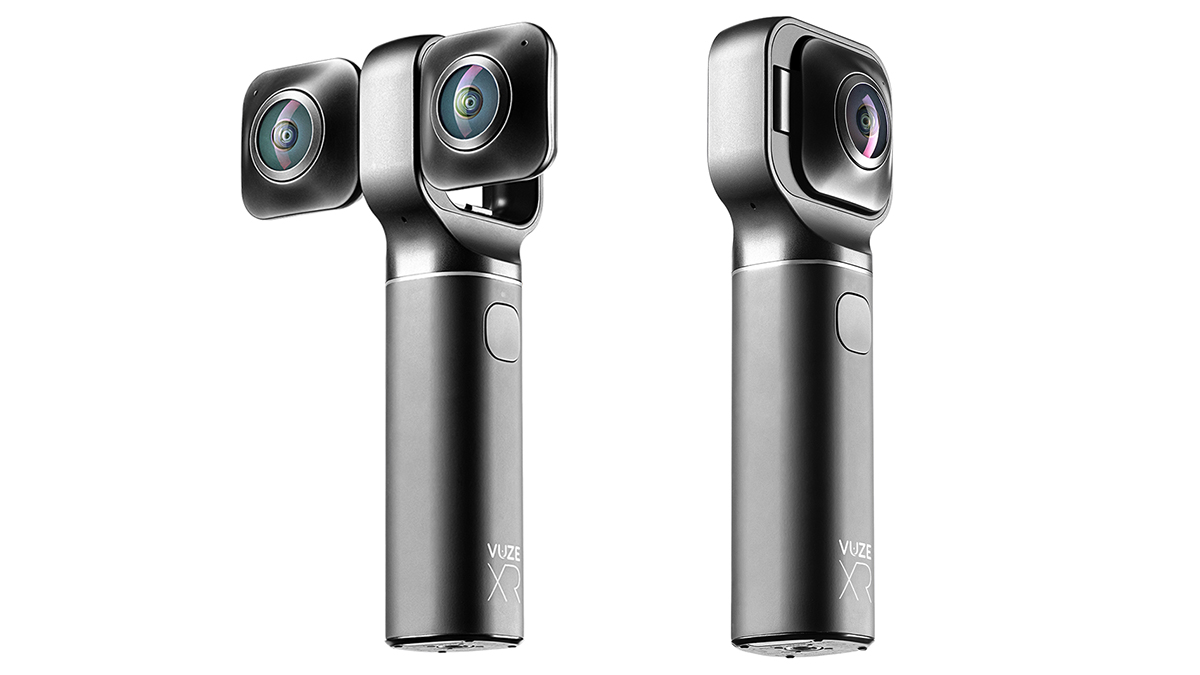
Vuze XR specifications
Two 12MP Sony IMX-378 sensors and two f/2.4 210-degree fisheye lenses are in charge of video and photo capture. In video mode, you can grab 5.7K video at 30 fps or 4K at either 60fps or 30 fps, with a maximum video bit rate of 120 Mb/sec. On the stills side, the resolution tops out at 18MP (6,000 x 3,000 pixels).
Battery life for the 1,200mAh battery is quoted at about an hour, which pretty much matches up with what we found – don't let it catch you out. The camera can then be recharged over a USB-C cable that can also double up as a data transfer method if you don't want to use your phone.
Images and video get saved to a microSD card that plugs into the base of the device, where there's also a tripod socket. It's not waterproof so it's not the best choice for your next kayaking adventure – and indeed its shape, with the integrated hand grip, means it's more for casual than action use anyway.
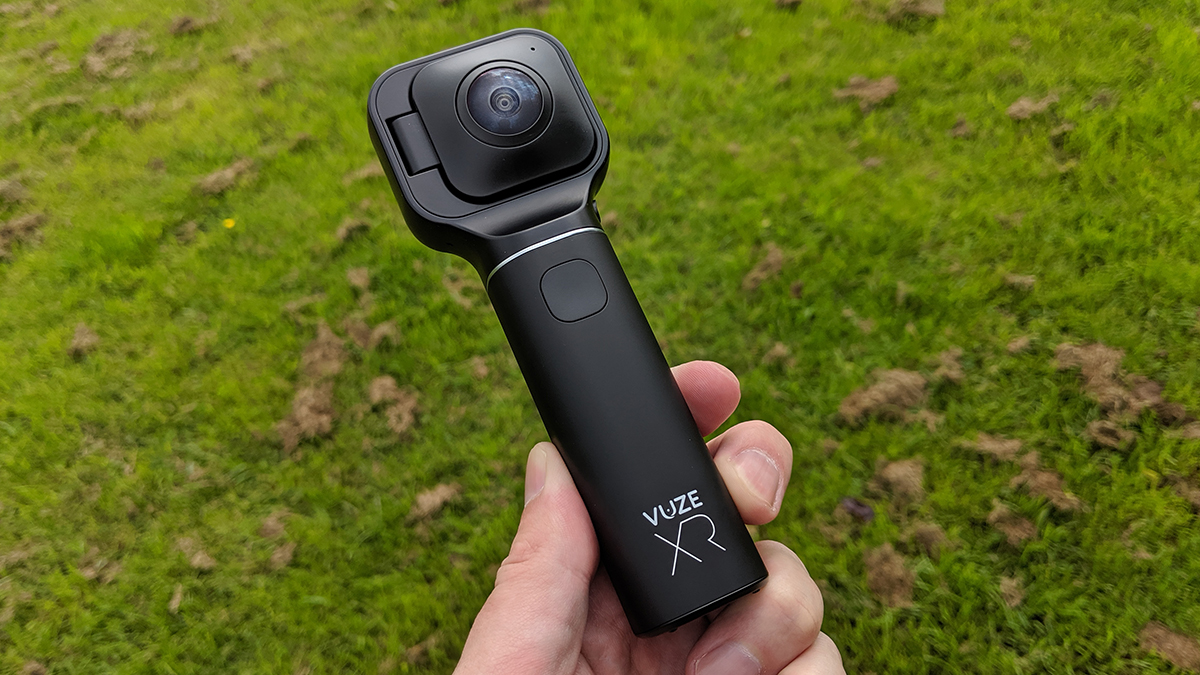
Build and handling
Beauty might be in the eye of the beholder according to the old saying but anyone would be hard pressed to argue the Vuze XR isn't a nice-looking bit of kit. It's rounded and curved in all the right areas, easy to hold, and solid in the hand. That said, it's obviously not shaped like a GoPro – it's best suited to handheld operation, and isn't going to be a good choice for something to strap on to your ski helmet.
Even the mechanism that flips out the two cameras to face the same direction works smoothly – no corners cut here. They need to be pushed back in manually, but that's no great disadvantage, and they fit back with a reassuring click.
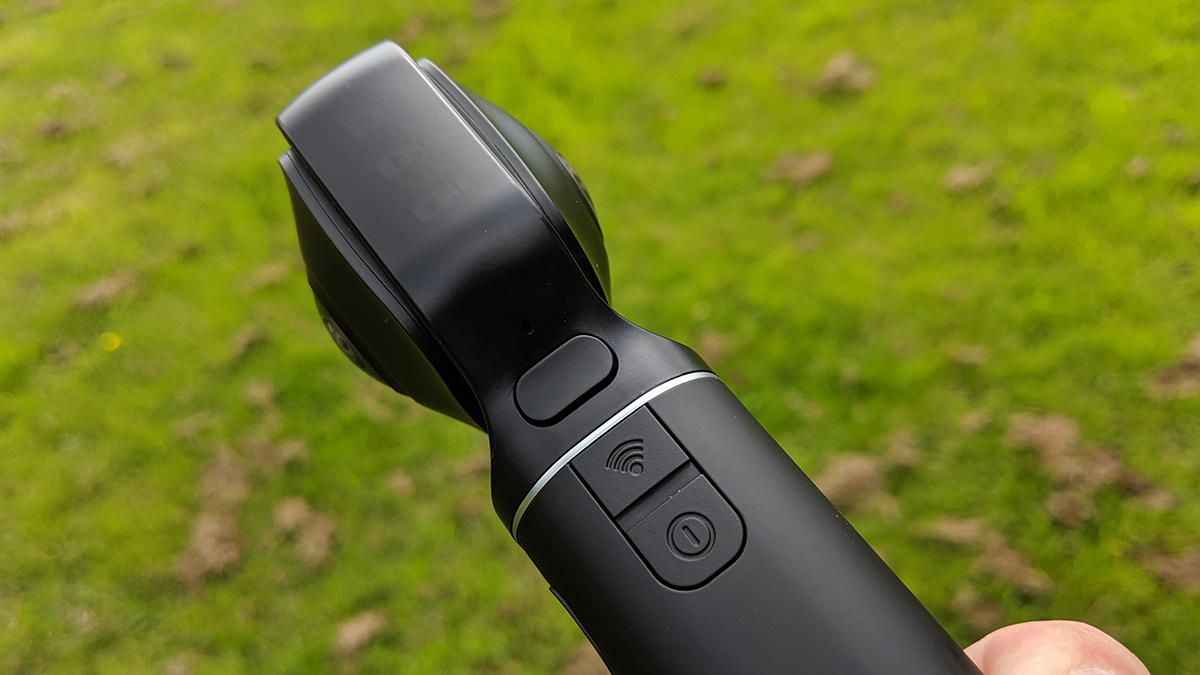
If we have got a few reservations it's in the button placements and stylings: you have to peer pretty close to see which buttons are which, and which mode you're in, though as you get to know the device that will of course get easier. We also noticed occasional connection problems between phone app and camera, but nothing that would seriously put you off a purchase.
The recording button on the front is a decent size but a little too easy to press accidentally for our liking – more than once we peered down at the Vuze XR to discover that we were unwittingly shooting video, which is bad for microSD card storage and battery life. Speaking of battery life, the quoted single hour turned out to be about right, so you can't really go crazy if you're going to be away from a power source for a long time.
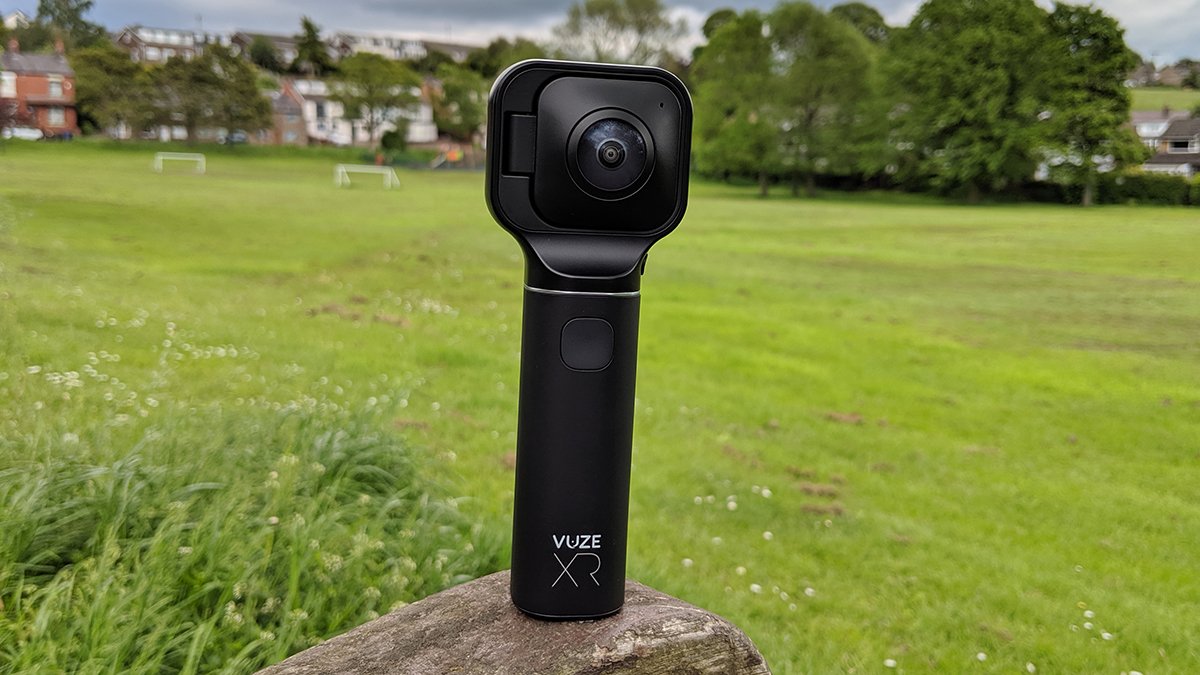
Performance
In our time shooting footage with the Vuze XR, we ended up very impressed with what we saw. This is a pocketable, not-overly-expensive camera that can get results that hold up well to anything you'll see on YouTube at the moment. Detail capture is respectable, even in lighter and darker areas, with scenes coming across well lit and vibrantly coloured – accurately matching what the eye sees.
You don't get much in the way of shot customisation either on the Vuze XR or through the app, but the point-and-shoot approach works well in most situations. Low light can be a problem, but no more so than other cameras of this class, which aren't particularly built to dazzle in the dark.
Serious VR movie makers are going to want more control over their work of course but the Vuze XR has a price and feature set to appeal to the casual filmmaker – and for that category of user it works very well, with results you'll be proud to show off (though you might need some tweaking in the desktop app to get them).
Don't expect the 6-axis video stabilisation to work wonders, however – it's more about keeping standard shots steady than ironing out major bumps and shakes – but it managed to keep our walking and driving shots under control. If you want serious shake reduction, you might want to think about a dedicated action cam.
To get your footage into a 3D form, you'll need to use the dedicated Vuze software on mobile or desktop, or upload your clips straight to Facebook or YouTube, which can handle the conversion for you. The finished 180-degree or 360-degree spheres can then be viewed on Facebook or YouTube (you can click and drag with the mouse to look around), or in a headset like the Oculus Go or Google Daydream View.
Our finished footage looked great when we uploaded it to YouTube, whether viewed on a computer screen or inside a headset – almost seamless stitching throughout, high quality in every direction (with the 5.7k resolution enabled). It's an immersive way of taking a 3D trip through your memories.
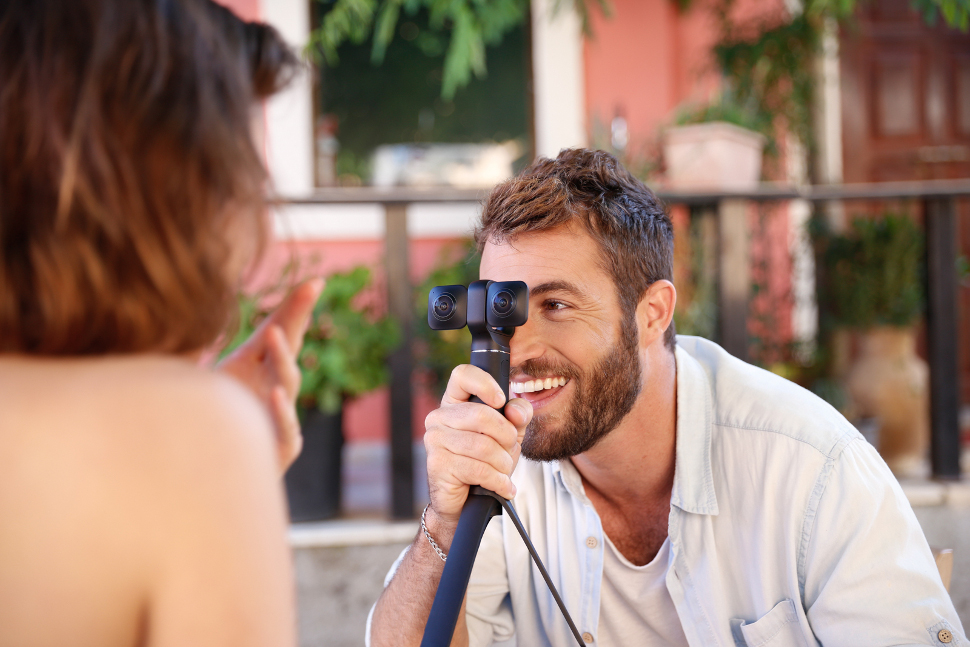
Verdict
For a device that offers not one but two VR shooting modes in a compact, easy-to-use package, the Vuze XR deserves a lot of plaudits. It's simple enough for anyone to use yet it produces videos and images that only the most professional content creators are going to quibble with in terms of quality.
Sure, there are flaws – the mobile app isn't much use beyond being a viewfinder, and the battery life is so-so – but on the whole our experience of using the Vuze XR was a very positive one. If you want to dive into the VR content game at a price that just about counts as affordable, give this camera some serious consideration.
Weighed up against its main rival, the Insta360 Evo, we'd say it's just about honours even in terms of function and the quality of the final results, but note the distinct difference in form factors – the Vuze XR is more for casual, hand-held use, whereas the Insta360 Evo gives you extra flexibility with its compact size.
Read more:
• The best 360 cameras: spherical VR video made easy!
• How to take 360-degree videos and photos
• 10 of the best 360° videos ever filmed
Dave is a freelance journalist who has been writing about all kinds of tech for more than two decades, covering everything from laptop reviews to data security news to guides to how to use the latest apps. When he's not busy trying to hit a specific word count and deadline, he enjoys long walks in the countryside, movies, and the occasional football match. He's based in Manchester, UK.
